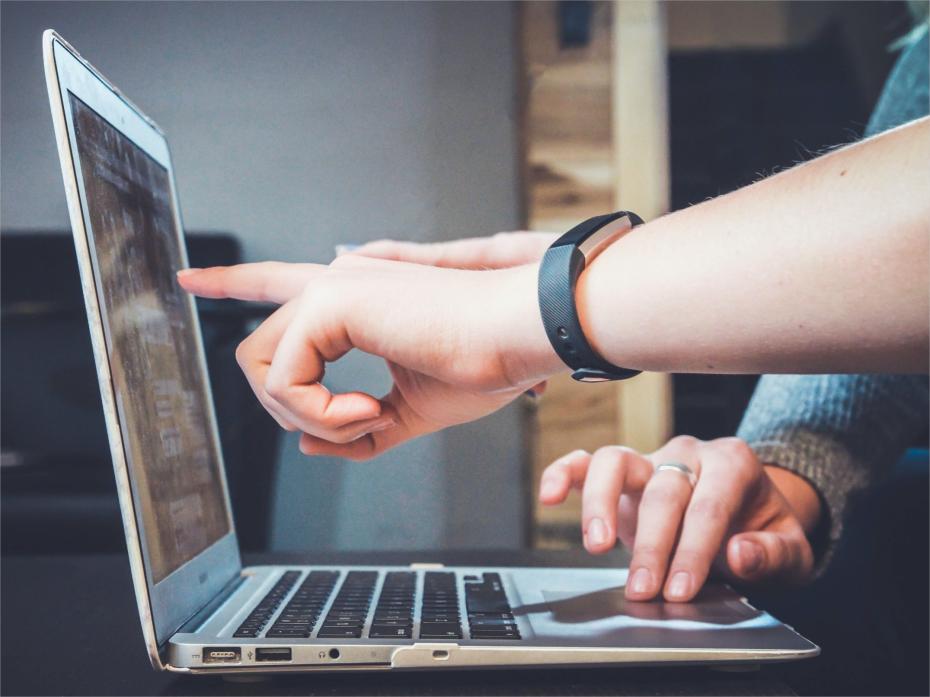
Using learning technologies to enhance students’ professional communication skills
In a year, we have trained more than 6,000 faculty, instructional designers and instructional support staff to work with the technology needed to engage in live, interactive learning with students both inside and outside the classroom.
Live-hosted online classes provided via ASU Sync use a variety of digital tools to support and maintain strong connections between faculty and students learning remotely. Combined, these technologies facilitate small-group interactions, presentations and digital co-creation.
But we wished to leverage technology to further amplify these student-to-instructor and student-to-student interactions as well as equip students with digital communication skills that they would need in the future workplace.
So we created a special toolset of teaching and communications platforms called the ASU Digital Backpack, accessible to all students and designed to enhance learning and employability. Here is an overview of how it was used across campus and the key lessons learned:
Videoconferencing skills for the future
Since March 2020, the ASU community has consumed millions — yes, that’s right, millions — of hours of Zoom time in the form of online classes. As this type of technology-enabled interaction continues to build momentum in the workforce, students are gaining real-world experience as both consumers and facilitators of online communication.
When Kathleen Casey, a senior majoring in kinesiology at ASU’s Barrett Honors College, wasn’t able to meet in person to defend her thesis, she turned to Zoom. After multiple check-ins with her committee chair, test runs, technology checks and practice sessions, Casey was able to successfully present her findings and respond to questions from the committee virtually using Zoom’s conferencing platform. This practice in remote presentations helps students become experienced online facilitators, which will help in their professional lives.
Enhanced flexibility
The use of videoconferencing tools such as Zoom is enabling students to gradually re-enter the classroom while ensuring that the university can prioritise the health of its community. The seamless integration of Zoom into the classroom allows students to rotate joining classes in person and remotely, providing flexibility that was previously unattainable.
ASU instructor Rachel Balven used Zoom to teach her Collaborative Team Skills course with 10 students in the physical classroom while 30 remote students participated live online. This hybrid approach is likely to be the future model for professional meetings and conferences, so familiarising students with the set-up prepares them for the workplace.
Real-time collaboration tool keeps students and faculty connected
Slack’s instant messaging and content sharing in a searchable platform has been used to host classroom discussions, develop new courses and support students — on campus and at home. There are more than 5,500 active course workspaces, with tens of thousands of messages sent daily.
In addition to Zoom, Balven used Slack and other tools to facilitate ongoing discussion between students working together on a semester-long project. Group huddles were turned into private Slack channels for each of the teams, which took off as students used it for both formal and informal communication.
Slackbots were used to automate certain tasks. For example, anytime Balven referenced the word “syllabus” in a Slack message, it would autolink to the course’s syllabus so students could easily reference the resource. Balven implemented Slack polls to capture group input and feedback. By the end of the course, Slack in essence replaced email and resulted in quicker, more effective real-time communication.
According to Slack, more than 750,000 businesses currently use their platform to support real-time collaboration and communication, meaning it is very likely that students will use Slack in the workplace upon graduation. This transforms the learning environment from a practice field to a digitally authentic space for interaction.
Making creative digital tools accessible
Creative digital assets — such as graphics, video and animation — are commonplace in social media and entertainment but are often overlooked in education. The creation of digital assets results in multimodal learning opportunities for faculty and students, to share information in a variety of ways to reach diverse audiences supporting the Universal Design for Learning (UDL) framework.
Since students have had limited access to the campus computers where they could access these tools, ASU offers free subscriptions to Adobe Creative Cloud, a suite of apps and services for video, design, photography and the web.
In many cases, students learned how to effectively use this technology as part of the course experience. Faculty professional development was also provided on a range of topics, including digital storytelling, digital portfolios, creative assessment, video production, animation and more to equip faculty with additional insights into using these creative technologies to enable learning. These are impactful course experiences because they promote future-ready skills of problem-solving, critical thinking and creativity — all of which are included in the top 10 skills of 2025, as reported in the World Economic Forum’s Future of Jobs Report 2020.
Looking towards the future
By enhancing the physical classroom with a digital extension, we have been able to connect our communities and enrich their learning networks in ways that were previously unimaginable.
Combined, these technologies help to foster more engaged interactions and co-creation of learning between students and faculty. Experience with these tools extends well beyond the classroom as each of these are widely used by the workforce of today and, indeed, tomorrow.
Kyle Bowen is the executive director of learning experience, and Allison Hall is the director of learning experience design in the University Technology Office at Arizona State University.
Additional Links
Read more about how ASU instructor Rachel Balven used Slack and Zoom to teach her Collaborative Team Skills course
Read more about the ASU Digital Backpack.




